I mentioned, in my last post, that I would be attending an antique power show. This week’s post covers that event with a lot of photos and three videos. I hope it is not boring but it is definitely aimed at those who enjoy looking at old machinery.
In addition to old tractors, including some very rare models, there were garden tractors, steam engines, threshing machines, two-man chainsaws, draft horses, hit-and-miss engines, antique waggons and vehicles, miniature railroads, and a flea market. Not all are pictured below but all were interesting to see and visit.
Live demonstrations of threshing and sawmilling were done. Corn shelling and lumber planing were on the show’s schedule. A parade of antique power was part of the show. Let’s move on the the imagery!
The tractor below is a rare unit. Around 150 were ever built and very few remain. Designed to be part car (with a heater installed) and a road gear giving up to about 45 mph speeds, it was thought a farmer could work his fields and go to town with the same unit. The idea did not go over very well.
A number of old waggons and antique trucks were included.
Antique cars were well represented, including this 1913 International Harvester.
There were row upon row of tractors, separated into brands, including these red Farmalls.
Even garden tractors had their own display area. These are getting quite collectible now.
When we think of steam tractors, we normally think of very large machines, but smaller samples were also produced. This show had some of each. Here is a smaller Case model.
Off to one side of the show arena a model railroad, with several miniature engines and cars, offered rides through a forested park.
Several demonstrations were scheduled, including threshing and sawmilling. Here is a photo of the later. It is quite likely that lumber for our 1894 home was produced on mills like this one. (A video is included below.)
I enjoyed the visit and taking in the demonstrations and looking at all the machinery. While I won’t go every year, it had been some time since I last attended a show and not a swap meet.
I put together three videos, one dealing with the parade of old equipment, the sawmill in operation, and threshing. Run times are 2:03 for the parade, 2:50 for the sawmill, and 1:23 for threshing.
I apologize of the jerkiness of the first part of this video. I had tried going back to hand-holding the camera, a mistake. The second half is better quality.
That’s it for now. Thanks for looking in!
Pam’s Penny
Who-da-thunk the guy running the antique power show Himself attended is my brother Craig’s friend Les Radcliffe. That’s the Midwest for you.
Happy Trails.
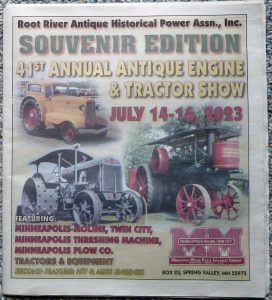
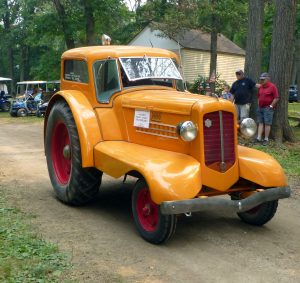
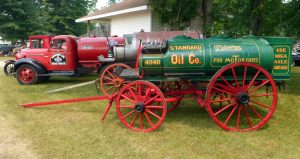
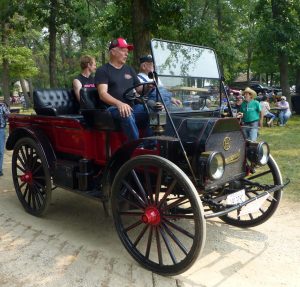
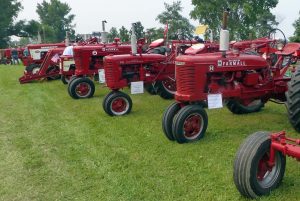
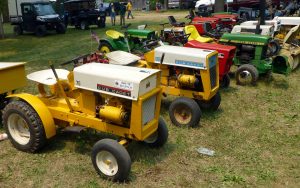
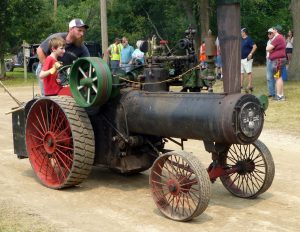
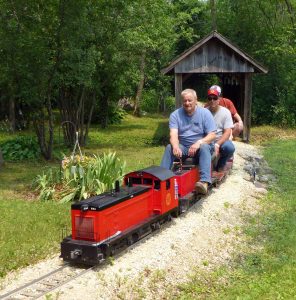
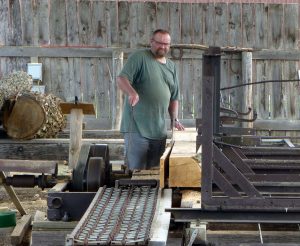
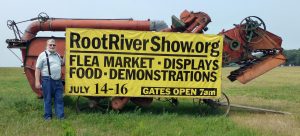
I appreciated the UDXL photo, as it reminded me of seeing one in operation many years ago. At the time, I thought the fenders and bumper a bit strange, though the headlights could help at night. It was 20 years ahead of time in providing a cab!
The mills & thresher demo’s reminded me of how “safety precautions” have changed. Exposed flywheels and power-transfer belts would never make it today, and exposed saw blades are generally better protected. Of course, sawblade manufacturing has improved – far less fractures and “explosions” when a log binds with the blade.
It’s also a reminder of one reason child labor laws were enacted. Children cleaned saw dust pits, usually while blades were in operation, as they were small enough to move around under the blade. More often with water-powered mills, but still a “tradition” with the smaller steam-powered mills…
Larry:
Thanks for the note. Yes, I was struck by all the opportunities one would have to get injured when running these old machines, but that was the way of it back around the turn of the century.
In the late ’50s and early ’60s my Dad would borrow a buzz saw (aka cordwood saw) to cut our firewood with an Allis-Chalmers “C” tractor, which he owned. Saw was powered through a belt. I was the “catcher,” grabbing the wood blocks as they fell away from the blade. Quite clear memories of those operations!
I did not get to see the sawmill planing demo, where the rough lumber was trimmed into dimensional size, although there were a lot of shavings around the equipment. Exposed trimmer heads for both sides plus top and bottom were standard. Easier to get to the blades to sharpen or change them that way, I guess.
Took in the flea market, not large, and watched the miniature trains. One was a replica of a regular steam engine and was itself a steamer, quite interesting.
I enjoyed the outing and spent several hours on-site. I will try to get to a few other shows in the area as they come up.
Thanks for the note!